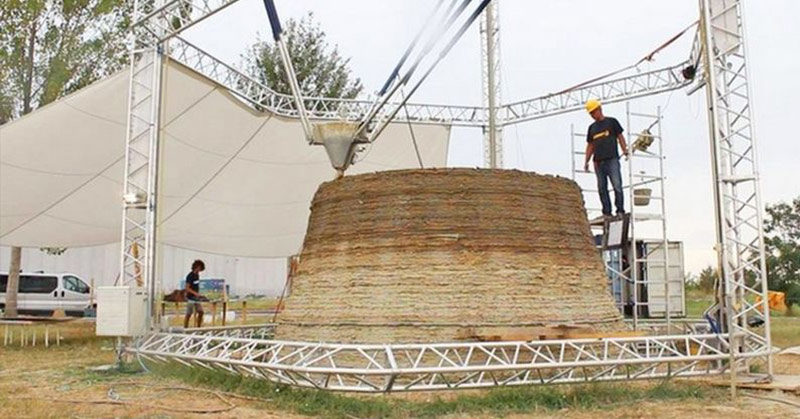According to United Nations projections, the global population is expected to reach 11.2 billion by the end of the century, up from 7.7 billion in 2019 [1]. As our population grows, so too will the need for more affordable and sustainable housing- an issue we are already facing with our current population size.
One company has found an innovative way to make 3D printed homes that use only local materials and can be built at a fraction of the cost of conventional homes.
3D Printed Homes
The World’s Advanced Savings Project (aka- the WASP), has made full-sized homes out of mud and clay using the world’s largest 3D printer [2].
Building with earth dates back millennia, but today it is being combined with modern digital fabrication techniques in order to supply widespread housing in poverty-stricken areas. The mud houses are constructed using a process called biomimicry, which draws inspiration from the solutions that are already available in nature. Large, delta-style 3D printers then manufacture habitable homes out of the materials available in the surrounding environment.
One of WASP’s projects is called Gaia, an affordable tiny home that’s been printed out of mud using a new “infinity 3D printer”, called the Crane Wasp.
Read: Want to double world food production? Return the land to small farmers.
The Crane Wasp has been developed specifically to print large-scale structures out of materials found in its immediate vicinity, which the company calls “zero-kilometer architecture”. It is easy to assemble and disassemble, and multiple printers can be set up in a modular fashion by adding more traverse and printer arms in order to build larger structures, or multiple structures if needed.
The company says that this means that it is unnecessary to cover the entire area involved in the construction with the printing area of the cranes because they can be reconfigured depending on the growth and shape of the building.
“More WASP Cranes, when working together, have a potentially infinite printing area and can be set by the on-site operators following the evolution of the architectural project.” [3]
Gaia was printed in only ten days out of locally sourced soil, rice husks, and straw, and only cost 1 035 dollars for the extra materials required, including windows, doors, thermo-acoustic insulation, fixtures, and protective coatings.
Wasp partnered with Rice House, an organization that focuses on the enhancement of waste from rice cultivation, in order to create Gaia. The compound used to build the structure was 25 percent soil, (30 percent clay, 40 percent silt and 30 percent sand) which was taken from the site, 40 percent straw chopped rice, 25 percent rice husk, and ten percent hydraulic lime [3].
Read: Seasteading – Would you move?
About Wasp
WASP is an Italian company that is a pioneer in the world of 3D printing with mud. All of the company’s projects are one hundred percent self-financed, and the revenue from the sale of their printers gets reinvested into research and development for future projects.
The company’s goal is to produce zero-mile homes, using only materials found in the surrounding area. The company describes their dream on their website:
“Print a healthy, beautiful and human-scale home with a cost that tends to be null.” [4]
The company says that earth is available everywhere, it is cheap, and it is easily malleable. When combined with other “zero-mile” local materials, buildings can be printed that last, that are structurally sound, and that do not leave ruins behind once they are no longer in use.
“The possibility of a home for all is an essential building block to the creation of a horizon of equality and meritocracy, shared prosperity, the horizon toward which WASP projects converge.” [4]
Read: Austin Is Getting a Village of 3D-Printed Affordable Homes—and They Look Incredible
Plans for the Future
Wasp’s long-term goal is to create an entire “technological village” using their 3D printing system. The village, which is already underway, will be located in Massa Lombarda, Italy, and will function in a circular, self-sufficient economy wherein residents will grow their own food, and use 3D printing to make their own products, tools, and furniture.
As the company website says:
“Siamo Sognatori, Siamo Realizzatori: Partiamo Dalla Stampa 3d Per Salvare Il Mondo – We are Dreamers, We are Makers: Let’s Start with 3D Printing to Save the World” [4].

